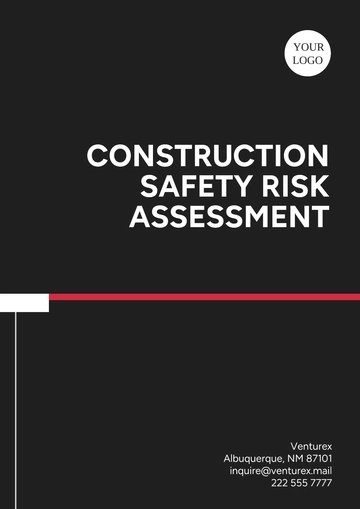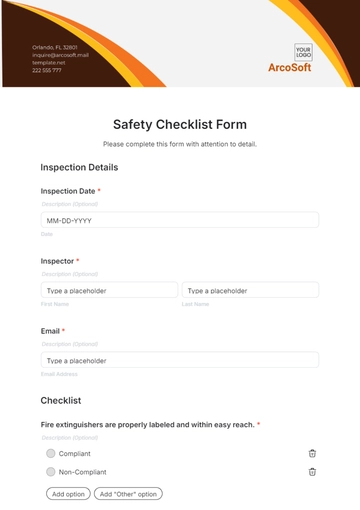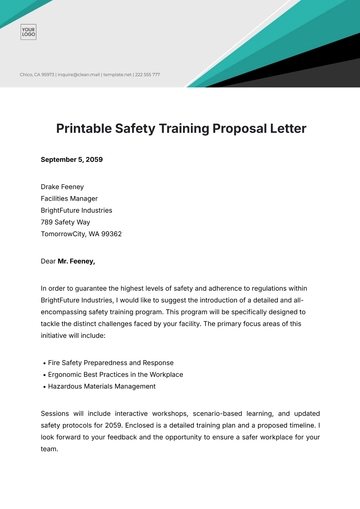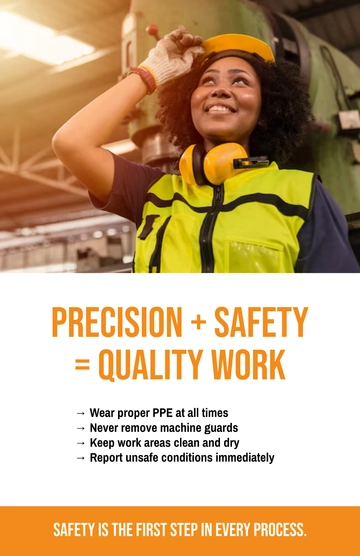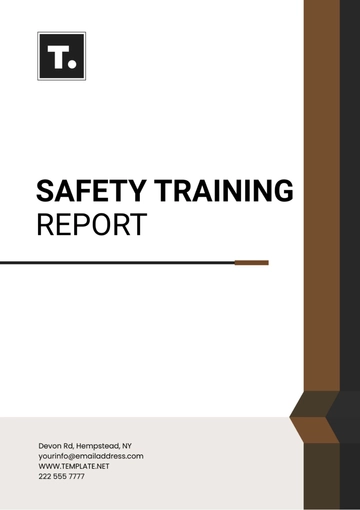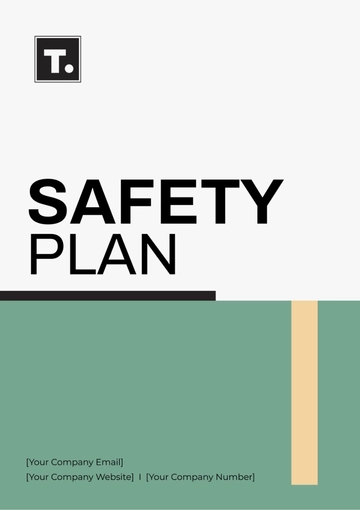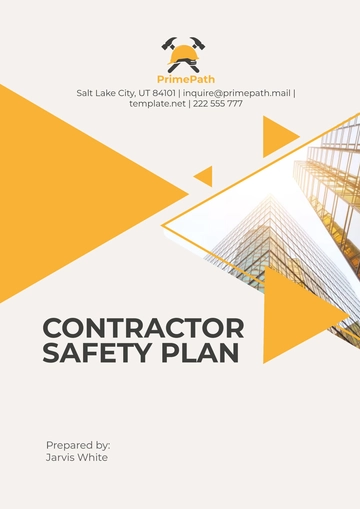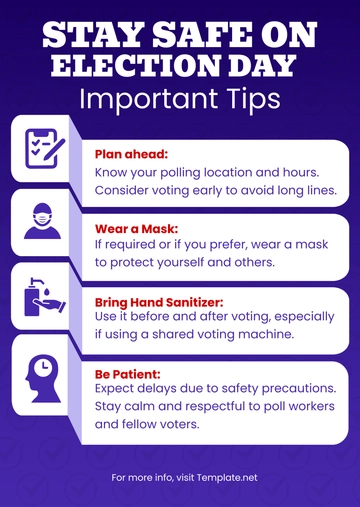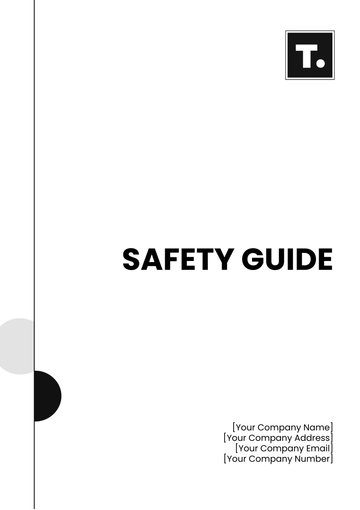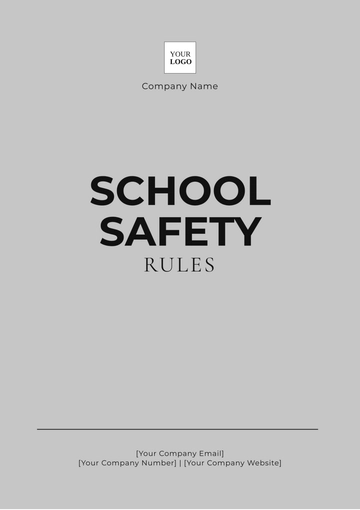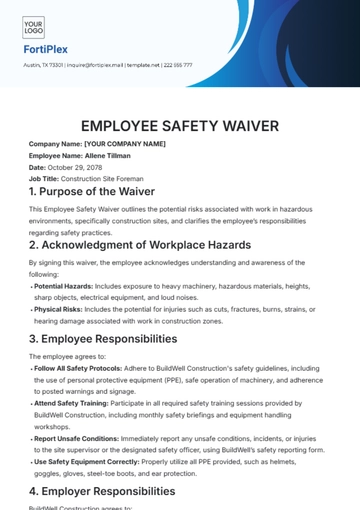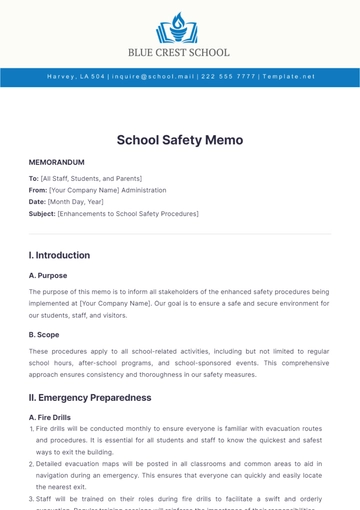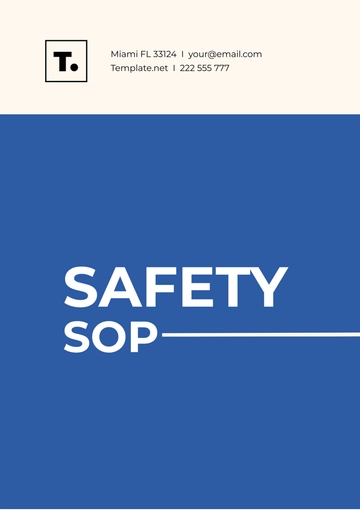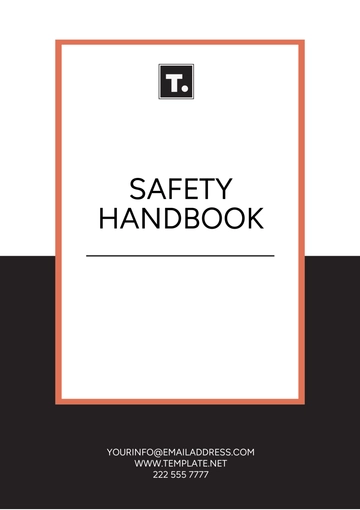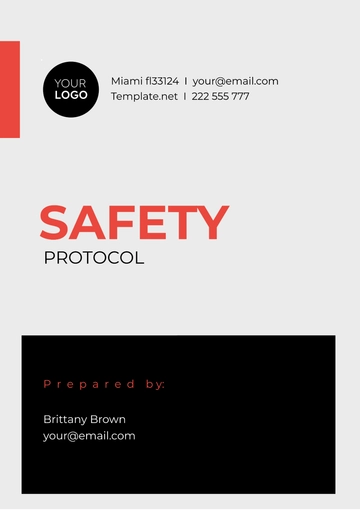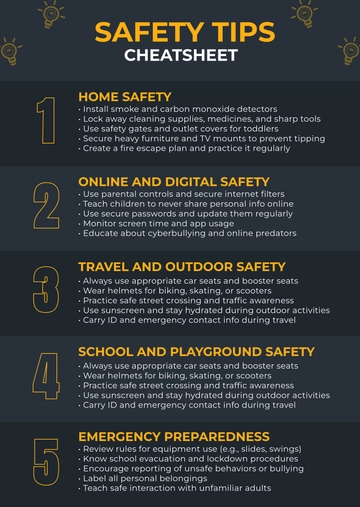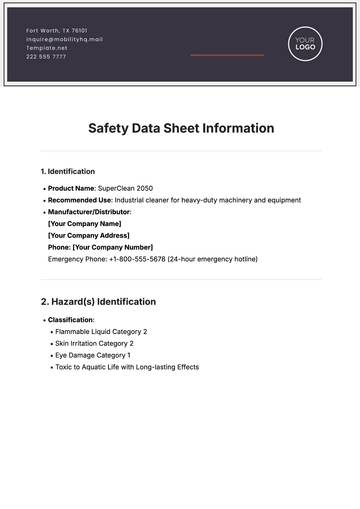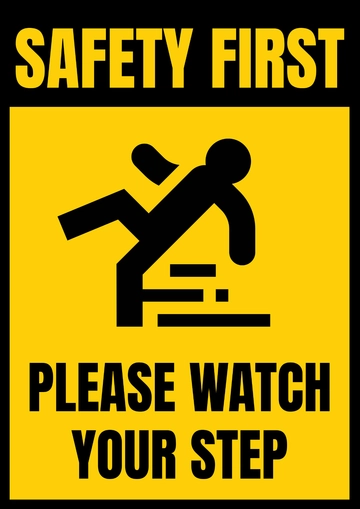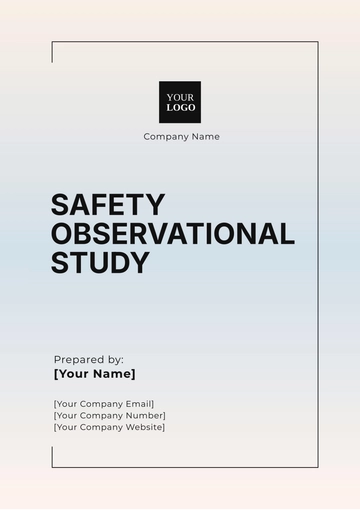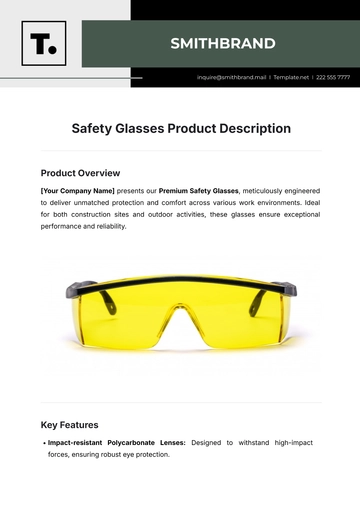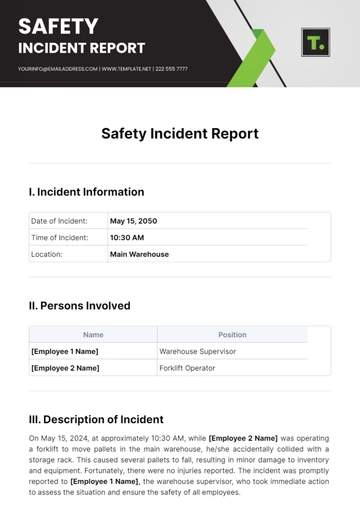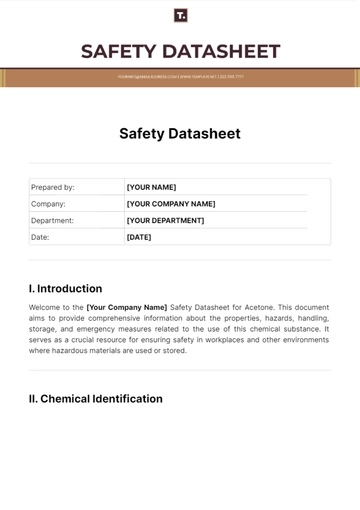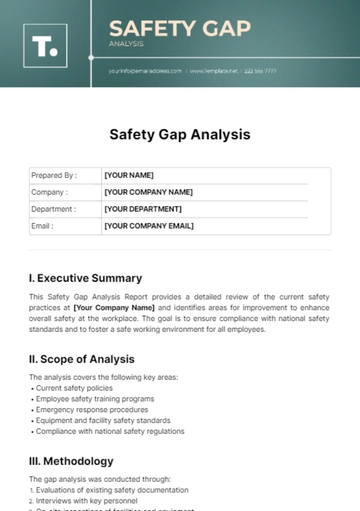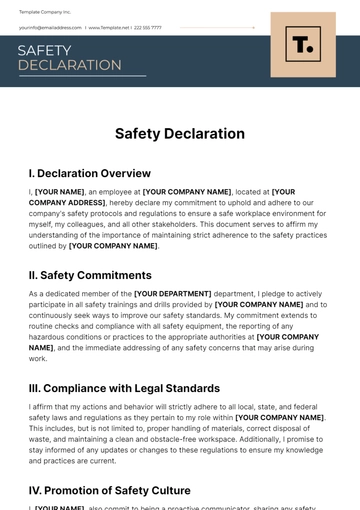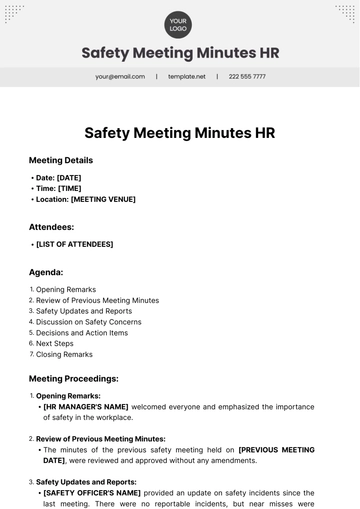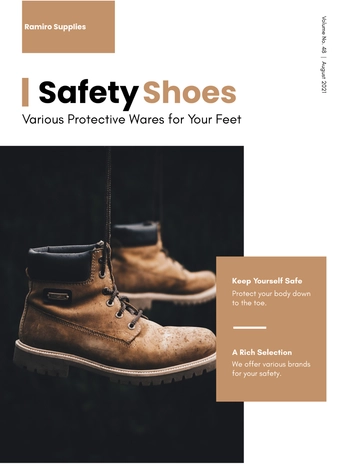Free Safety Audit Documentation
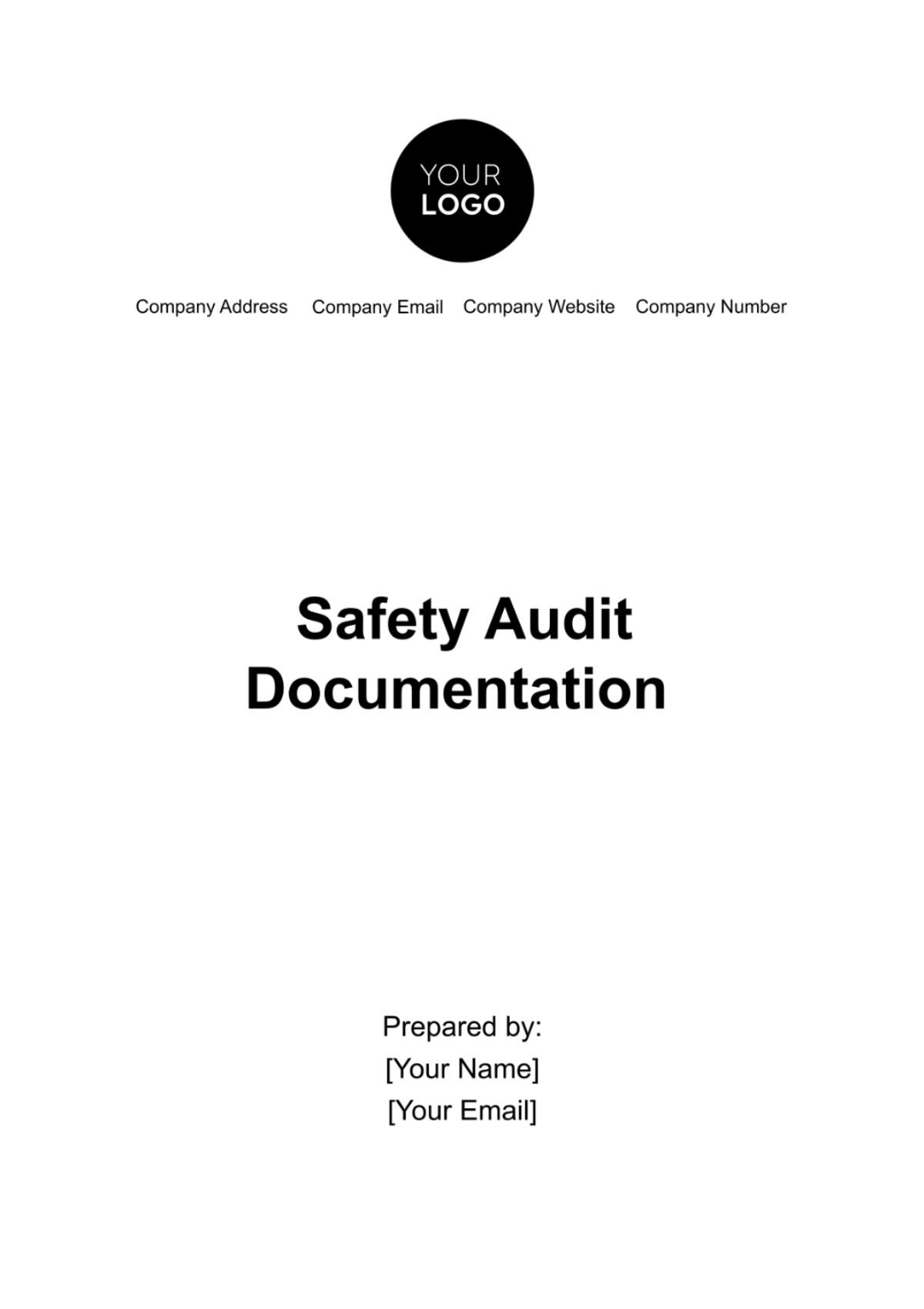
I. Audit Overview
Purpose of the Audit
This safety audit aims to systematically evaluate [Your Company Name]'s adherence to occupational health and safety standards. The focus is on identifying areas of compliance and non-compliance, assessing risk management practices, and enhancing workplace safety.
Audit Methodology:
Our methodology encompasses a mix of direct observations, staff interviews, and a review of safety records and documentation. We adhere to OSHA guidelines and ISO 45001 standards to ensure a comprehensive audit process.
Audit Team Information:
The audit team comprises experienced professionals, including a lead auditor with over [10 years] of experience in safety compliance, two safety officers, and a legal advisor specializing in workplace safety regulations.
II. Compliance Assessment
Compliance assessment is crucial for determining how well [Your Company Name] aligns with external and internal safety standards. This section meticulously documents the audit's compliance-related findings.
A. Legal and Regulatory Compliance
We reviewed the company's compliance with OSHA regulations, including workplace ergonomics, hazard communication, and emergency response procedures.
Regulation Category | Items Assessed | Compliance Rating | Remarks |
OSHA | Workplace Ergonomics | High | Minor improvements needed in ergonomic workstation setups |
OSHA | Hazard Communication | Moderate | Needs better labeling of hazardous substances |
Local Safety Codes | Emergency Response | High | Well-implemented emergency procedures |
Environmental Regulations | Waste Disposal | High | Compliant with environmental waste management standards |
Fire Safety Codes | Fire Drills and Equipment | Moderate | Regularity of fire drills needs improvement |
B. Internal Policy Compliance
Our assessment of internal safety policies shows that [Your Company Name] has effectively implemented most of its safety procedures. However, improvements are needed in documenting incident reports and conducting regular safety training for new employees.
Policy Area | Compliance Status | Improvement Needed | Remarks |
PPE Usage | High | None | Excellent adherence in manufacturing department |
Incident Reporting | Moderate | Documentation Process | Establish a more systematic incident documentation method |
Safety Training | Low | Regular Training Schedules | Implement regular safety training for all employees |
Equipment Maintenance | High | None | Consistent maintenance checks observed |
Safety Signage | Low | Update Signage | Outdated safety signs in the warehouse area need replacement |
C. Observations and Findings
Specific observations include outdated safety signage in the warehouse area, inconsistent record-keeping of safety drills, and exemplary adherence to PPE usage in the manufacturing department.
Observation Area | Finding | Compliance Level | Recommended Action |
Warehouse Safety Signage | Outdated Signage | Low | Replace with updated signs |
Record-Keeping of Drills | Inconsistent | Moderate | Standardize and document all safety drills |
PPE Usage in Manufacturing | Exemplary | High | Maintain current practices |
Emergency Exit Accessibility | Clear | High | Continue regular checks for obstruction-free exits |
Chemical Storage | Well-Organized | High | Ensure ongoing compliance with storage protocols |
III. Risk Identification and Analysis
Identifying and analyzing risks are pivotal to the audit process. This section highlights the potential hazards discovered during the audit and provides an assessment of these risks.
A. Hazard Identification
The audit identified several hazards, including electrical hazards in the maintenance department, potential chemical spills in the storage area, and ergonomic risks in the office workspace.
Hazard Type | Specific Hazard | Location | Frequency of Observation |
Electrical | Exposed Wiring | Maintenance Area | Occasionally |
Chemical | Potential Spills | Storage Area | Rare |
Ergonomic | Improper Desk Setup | Office Workspace | Frequently |
Fire Safety | Inadequate Fire Extinguishers | Warehouse | Occasionally |
Environmental | Poor Air Quality | Production Floor | Rare |
B. Risk Evaluation
Each identified hazard was evaluated for its potential impact and likelihood. Electrical hazards were categorized as high risk due to their severe potential consequences, while ergonomic risks were deemed moderate.
Hazard Type | Impact Severity | Likelihood | Overall Risk Level |
Electrical | High | Moderate | High Risk |
Chemical | Moderate | Low | Moderate Risk |
Ergonomic | Low | High | Moderate Risk |
Fire Safety | High | Low | Moderate Risk |
Environmental | Moderate | Moderate | Moderate Risk |
C. Risk Prioritization
The prioritization of risks is based on their severity and likelihood of occurrence. High-priority risks, such as electrical hazards, require immediate attention, whereas moderate risks like ergonomic issues warrant a scheduled action plan.
Hazard Type | Overall Risk Level | Priority Level | Recommended Action |
Electrical | High Risk | High Priority | Immediate Rectification |
Chemical | Moderate Risk | Medium Priority | Scheduled Review |
Ergonomic | Moderate Risk | Medium Priority | Ergonomic Assessments |
Fire Safety | Moderate Risk | Medium Priority | Update Safety Equipment |
Environmental | Moderate Risk | Medium Priority | Improve Ventilation |
IV. Recommendations and Action Plan
A. Corrective Actions
For electrical hazards, we recommend an immediate review and upgrade of all electrical installations. Chemical spill risks can be mitigated by improving storage practices and providing additional spill response training.
Risk Category | Recommended Action | Justification |
Electrical | Review and Upgrade Electrical Installations | To address exposed wiring hazards |
Chemical | Improve Storage Practices, Spill Response Training | To reduce spill risks |
Ergonomic | Implement Ergonomic Assessments and Adjustments | To minimize ergonomic injuries |
Fire Safety | Update Fire Safety Equipment and Drills | To enhance fire preparedness |
Environmental | Improve Air Quality and Ventilation | To ensure a healthier work environment |
B. Implementation Timeline
Immediate actions, such as electrical safety upgrades, should commence within [30 days]. Medium-term actions, like ergonomic improvements, are recommended to be implemented within the next [90 days].
Action Item | Implementation Start | Completion Deadline |
Electrical Safety Upgrades | [Within 30 days] | [60 days] |
Chemical Storage Improvement | [Within 45 days] | [90 days] |
Ergonomic Workspace Adjustments | [Within 30 days] | [Ongoing Evaluation] |
Fire Safety Equipment Update | [Within 60 days] | [120 days] |
Air Quality Improvement Initiatives | [Within 90 days] | [180 days] |
C. Responsible Parties
Assigning specific responsibilities, such as the maintenance manager overseeing electrical safety upgrades and the HR department addressing ergonomic risks, ensures accountability and timely implementation.
Action Item | Responsible Party | Oversight Role |
Electrical Safety Upgrades | Maintenance Manager | Supervision and Compliance Check |
Chemical Storage Improvement | Warehouse Supervisor | Implementation and Training |
Ergonomic Workspace Adjustments | HR Department | Assessment and Procurement |
Fire Safety Equipment Update | Safety Officer | Coordination and Follow-up |
Air Quality Improvement Initiatives | Facilities Manager | Project Management and Execution |
V. Audit Summary and Follow-Up
This audit has found that [Your Company Name] generally maintains a high standard of workplace safety. Key areas for improvement include electrical safety, chemical spill preparedness, and ergonomic risk management. A follow-up audit is scheduled for [six months] post-implementation of the recommended actions. This will assess the effectiveness of the actions taken and identify any further improvements needed. [Your Company Name] is commended for its commitment to safety. Continuous improvement in safety practices is essential, and this audit provides a roadmap for ensuring a safer workplace.
- 100% Customizable, free editor
- Access 1 Million+ Templates, photo’s & graphics
- Download or share as a template
- Click and replace photos, graphics, text, backgrounds
- Resize, crop, AI write & more
- Access advanced editor
Streamline safety audit documentation with Template.net's Safety Audit Documentation Template. This editable and customizable tool provides a structured format for documenting safety audits efficiently. Utilize our intuitive Ai Editor Tool to tailor the documentation to your organization's specific needs effortlessly, ensuring thorough records and compliance with safety standards.
